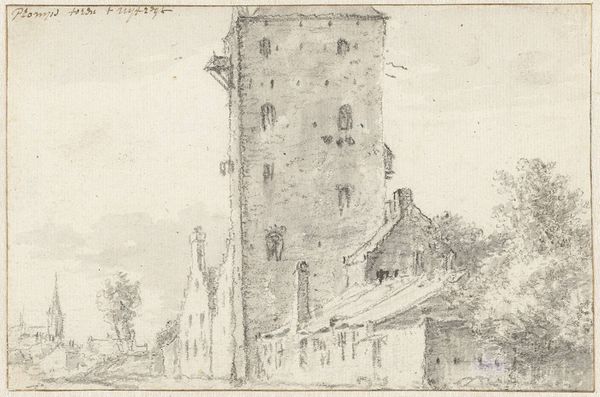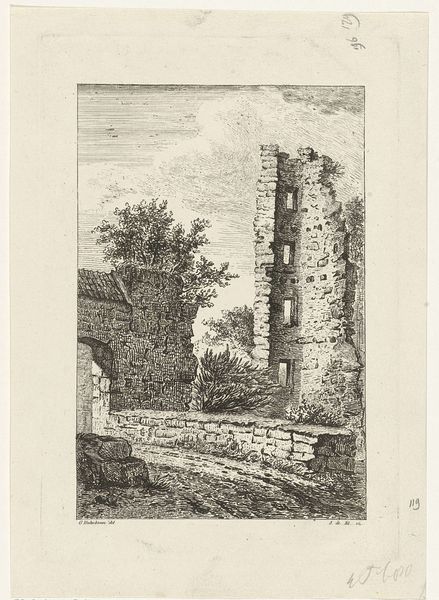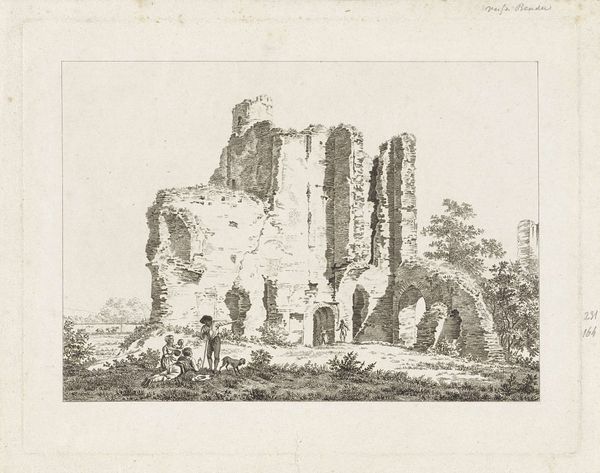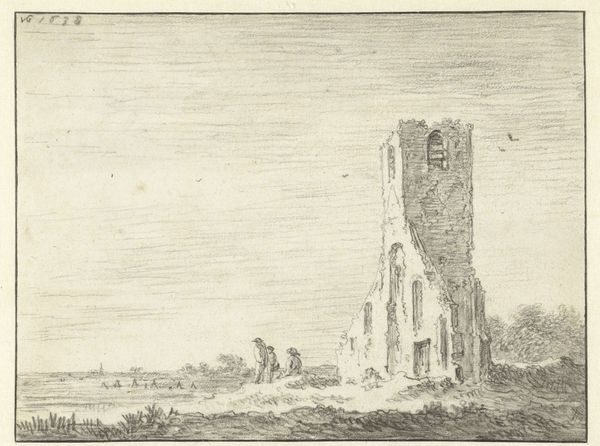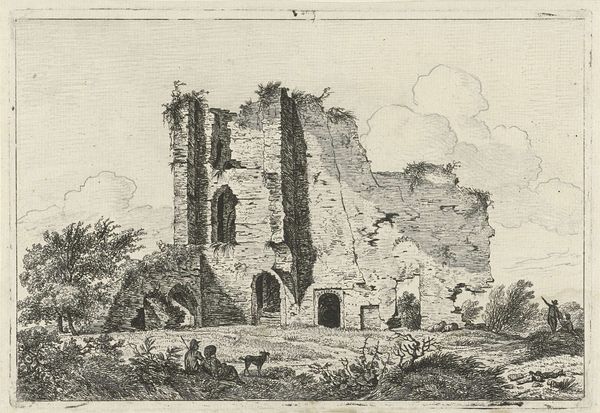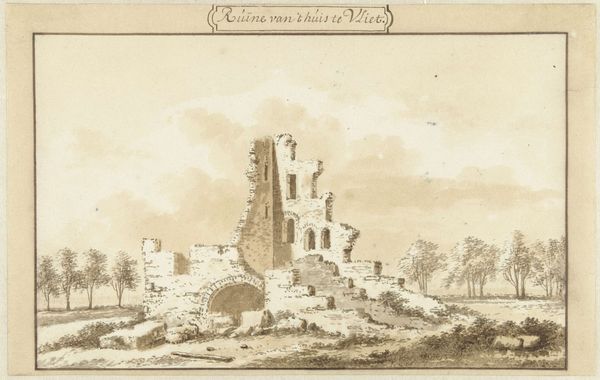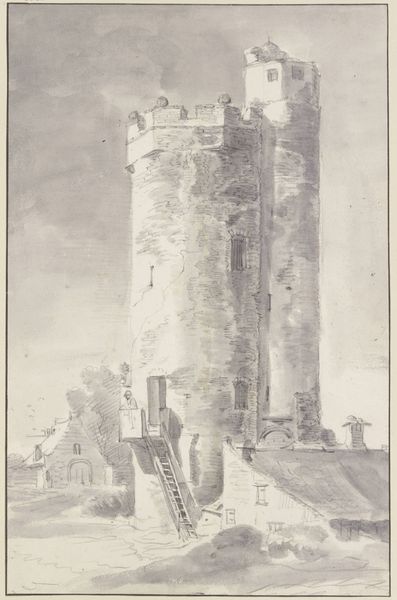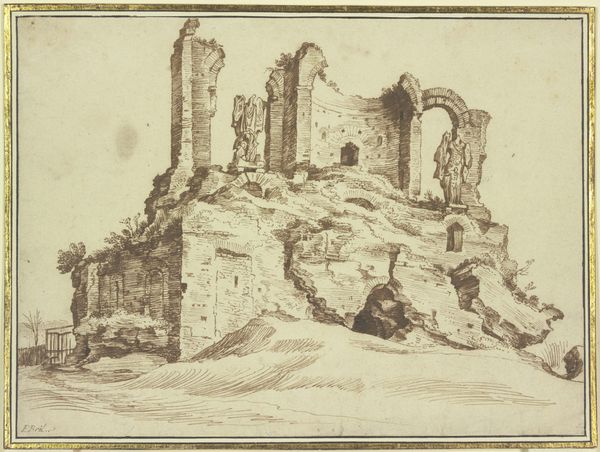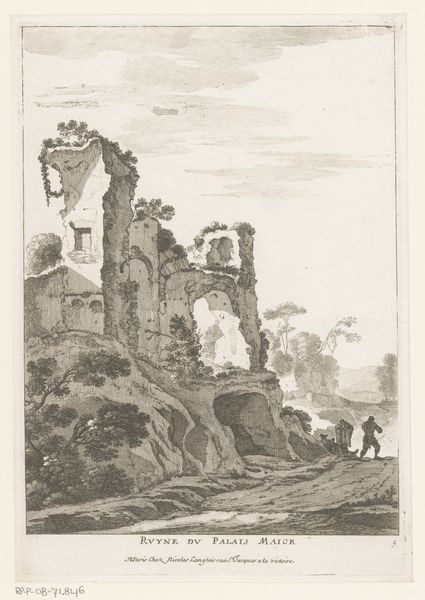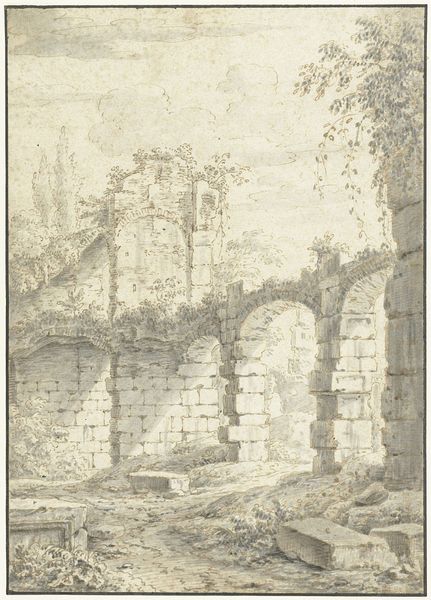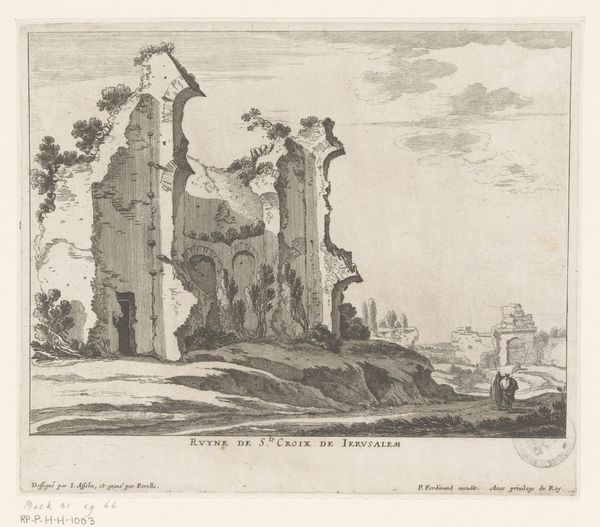
drawing, paper, ink
drawing
pencil sketch
landscape
paper
ink
Dimensions: height 198 mm, width 151 mm
Copyright: Rijks Museum: Open Domain
Curator: This drawing, rendered in ink and pencil on paper, is titled "The Ruin of the Church of Eik en Duinen near The Hague." The artist is Valentijn Klotz, and it was likely created sometime between 1715 and 1725. It strikes me first as rather bleak, almost mournful. The somber tones and the decaying structure create a palpable sense of loss. Editor: The ruin depicted isn't just a visual element, but a loaded signifier within a complex history. It begs questions about power structures and institutional collapse—whose values were represented by this church, and why was it left to deteriorate? Perhaps its failure reflects broader socio-political changes? Curator: Observe the interplay of light and shadow; Klotz uses delicate shading to delineate the crumbling stone. Note how the artist employs hatching and cross-hatching to suggest depth and texture, even in such a restricted palette. There's a stark elegance to its composition, even as the subject is literally falling apart. Editor: Elegance perhaps masks complicity. Consider the context: the Dutch Golden Age, fueled by colonial exploitation. Did this church benefit from that system? Documenting its decay becomes a charged act when viewed through the lens of social justice; a crumbling icon could symbolize the decline of a privileged, oppressive era. Curator: The focus on the architectural form, the skeletal remains of what was once a complete structure… isn’t this suggestive of the passage of time? It feels allegorical, a memento mori emphasizing mortality and the ephemeral nature of human endeavor, viewed from a safe distance. Editor: The memento mori reading is insufficient. We must delve into the silenced voices behind the construction and ultimate abandonment. Who built the church? Who worshipped there? Whose labor paid for it? Klotz’s artwork, likely intended as a landscape study, becomes an archive hinting at stories we need to unearth. Curator: I'm drawn back to the skillful draughtsmanship, and the contrast between the architectural rigidity of the ruin and the organic shapes of the encroaching vegetation. Editor: Precisely! This shows we must critically question the landscape tradition itself – it's never neutral, it always frames power dynamics!
Comments
No comments
Be the first to comment and join the conversation on the ultimate creative platform.
